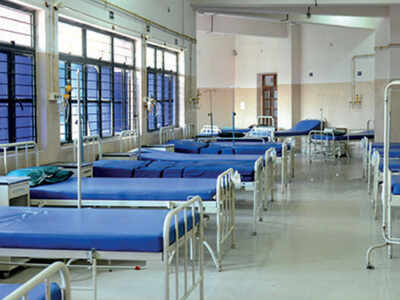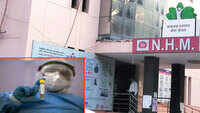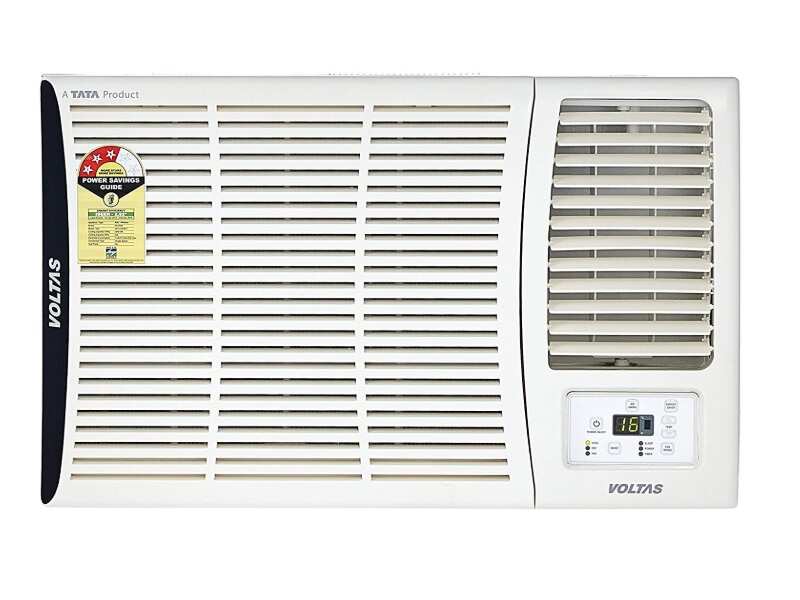
GURUGRAM: The city needs to prepare for the Covid-19 spike. On Saturday, for the first time since lockdown began, the Haryana government released projections of case growth in the city which can form the basis of a contingency plan. The figures, drawn up on the basis of doubling rate of cases in the city, project a need to prepare for 35,000 cases by the end of the month, 1.5 lakh by end-July and 2.5 lakh by the end of August.
If 12% of these cases need beds, then the city should have 4,200 beds by the end of June, 18,000 in July and 30,000 in August. If the share of cases that require medical attention goes up to 15%, the city will need 5,200 beds this month, 22,500 in July and 37,500 in August.
Earlier this week, Delhi had also used the doubling rate as a basis to prepare a contingency plan. On Tuesday, Delhi deputy chief minister Manish Sisodia had said the city needed to prepare for 1 lakh cases by end-June 30 and 5.5 lakh by the end of July, for which it would need 80,000 beds.
The projections are meant to be used for a worst-case scenario assessment and and actual cases don’t often reach these points. The doubling rate, over a period of time, falls as an increase in the number of cases expands the base.
Gurugram, as of Saturday, has 4,600 beds. “More hospitals are being requisitioned by the administration and we are working to increase the capacity of hospitals already requisitioned,” said Vivek Kalia, estate officer, HSVP-II, Gurugram. Kalia is in charge of monitoring the availability of beds and ventilators in the city. On Saturday, 17 more private hospitals were added to the list of those that can take in Covid-19 patients. The city now has 55 hospitals that can do so. It had 23 on June 1, which went up to 28 by June 7 and 38 on June 10.
Of the 4,600 beds available, 17% are in the ICUs. Gurugram, which added 203 cases on Saturday to have 3,125 Covid cases, has 14 critical patients. The projections assume about 4.8% of all patients would need ventilator support.
Going by the projections of 12% of all patients needing beds, the city needs to have the resources to provide ventilator support to 252 patients by the end of June, 1,080 patients by the end of July and 1,800 by the end of August. Just about 7% of the city’s hospital beds have ventilator support. If 15% of all patients needed beds, the ventilator requirement would be 315 by the end of the month, 1,350 by the end of July and 2,250 by the end of August.
Besides stepping up capacity of health facilities, the district administration team overseeing bed management is branching out. Headed by CEO of GMCBL Sonal Goel, who is being assisted by Kalia and Zila Parishad CEO Kulbir Dhaka, the team has proposed to the Haryana government that 35 community centres within municipal area be converted into quarantine centres. Built-up office spaces on SPR, Dwarka Expresswar and Sohna Road can be used as dormitories.
Isolation centres can be set up in banquet halls and convention centres. And railway coaches can double up as beds. The city has set aside 1,978 rooms for those coming in from abroad via Vande Bharat. It has identified 927 rooms in hotels and 648 rooms elsewhere as paid isolation facilities.
For those with mild to moderate symptoms, hotels and guest houses are being requisitioned. Those with no symptoms are anyway being asked to isolate themselves at home.
As cases increase, the administration has recognized, there will be a need to streamline data flow. All hospitals requisitioned for Covid treatment have been given access to the online platform, gmdahrheal, to update case data. That data used to be collected from hospitals before being uploaded in one go. However, with cases going up and more hospitals coming in, this process could make things faster. For each hospital, the chief medical officer has appointed a team of medical officers, with a nodal officer in charge.
If 12% of these cases need beds, then the city should have 4,200 beds by the end of June, 18,000 in July and 30,000 in August. If the share of cases that require medical attention goes up to 15%, the city will need 5,200 beds this month, 22,500 in July and 37,500 in August.
Earlier this week, Delhi had also used the doubling rate as a basis to prepare a contingency plan. On Tuesday, Delhi deputy chief minister Manish Sisodia had said the city needed to prepare for 1 lakh cases by end-June 30 and 5.5 lakh by the end of July, for which it would need 80,000 beds.
The projections are meant to be used for a worst-case scenario assessment and and actual cases don’t often reach these points. The doubling rate, over a period of time, falls as an increase in the number of cases expands the base.
Gurugram, as of Saturday, has 4,600 beds. “More hospitals are being requisitioned by the administration and we are working to increase the capacity of hospitals already requisitioned,” said Vivek Kalia, estate officer, HSVP-II, Gurugram. Kalia is in charge of monitoring the availability of beds and ventilators in the city. On Saturday, 17 more private hospitals were added to the list of those that can take in Covid-19 patients. The city now has 55 hospitals that can do so. It had 23 on June 1, which went up to 28 by June 7 and 38 on June 10.
Of the 4,600 beds available, 17% are in the ICUs. Gurugram, which added 203 cases on Saturday to have 3,125 Covid cases, has 14 critical patients. The projections assume about 4.8% of all patients would need ventilator support.
Going by the projections of 12% of all patients needing beds, the city needs to have the resources to provide ventilator support to 252 patients by the end of June, 1,080 patients by the end of July and 1,800 by the end of August. Just about 7% of the city’s hospital beds have ventilator support. If 15% of all patients needed beds, the ventilator requirement would be 315 by the end of the month, 1,350 by the end of July and 2,250 by the end of August.
Besides stepping up capacity of health facilities, the district administration team overseeing bed management is branching out. Headed by CEO of GMCBL Sonal Goel, who is being assisted by Kalia and Zila Parishad CEO Kulbir Dhaka, the team has proposed to the Haryana government that 35 community centres within municipal area be converted into quarantine centres. Built-up office spaces on SPR, Dwarka Expresswar and Sohna Road can be used as dormitories.
Isolation centres can be set up in banquet halls and convention centres. And railway coaches can double up as beds. The city has set aside 1,978 rooms for those coming in from abroad via Vande Bharat. It has identified 927 rooms in hotels and 648 rooms elsewhere as paid isolation facilities.
For those with mild to moderate symptoms, hotels and guest houses are being requisitioned. Those with no symptoms are anyway being asked to isolate themselves at home.
As cases increase, the administration has recognized, there will be a need to streamline data flow. All hospitals requisitioned for Covid treatment have been given access to the online platform, gmdahrheal, to update case data. That data used to be collected from hospitals before being uploaded in one go. However, with cases going up and more hospitals coming in, this process could make things faster. For each hospital, the chief medical officer has appointed a team of medical officers, with a nodal officer in charge.
Quick Links
Kerala Coronavirus Helpline NumberHaryana Coronavirus Helpline NumberUP Coronavirus Helpline NumberBareilly NewsBhopal NewsCoronavirus in DelhiCoronavirus in HyderabadCoronavirus in IndiaCoronavirus symptomsCoronavirusRajasthan Coronavirus Helpline NumberAditya ThackerayShiv SenaFire in MumbaiAP Coronavirus Helpline NumberArvind KejriwalJammu Kashmir Coronavirus Helpline NumberSrinagar encounter
Get the app








